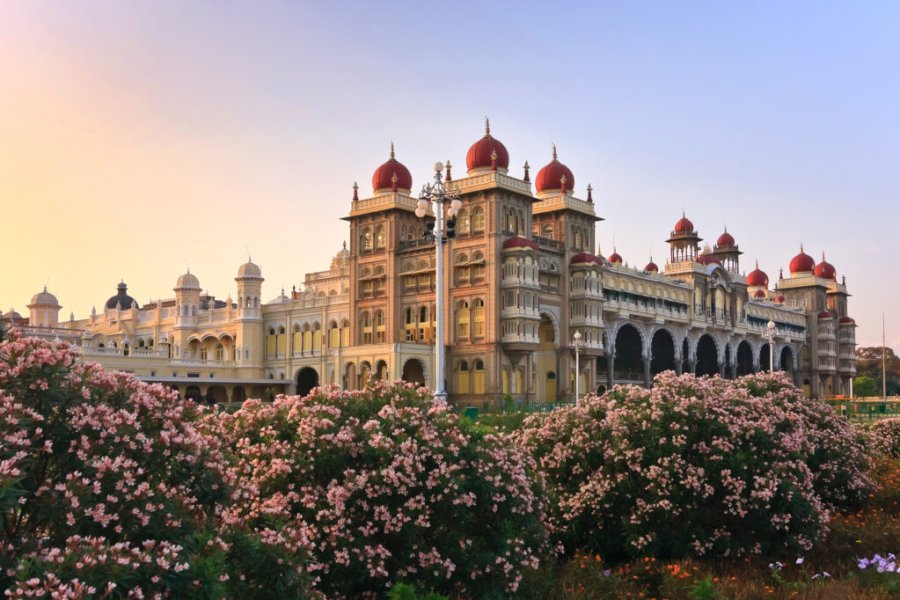Why go to South India? The 12 good reasons to go South India

Sublime traditional dances
Every hand position, every eye movement carries a meaning.

Colorful festivities
Many festivals where dancers, traditional musicians and elephants parade.

Exceptional historic sites
Numerous ancient sites and monuments are listed as Unesco World Heritage Sites.

The backwaters of Kerala
A houseboat cruise along the canals is an unforgettable experience.

Sumptuous and varied landscapes
From the green hills of the Western Ghats to the arid plains of the Deccan plateau.

Fascinating Hindu temples
South India is home to some of the country's oldest and most majestic temples.

A tasty gastronomy
Each region has its own recipes offering the visitor a gustatory and sensory journey.

Coastal paradise
The southern coastline boasts long, beautiful beaches fringed with palm trees.

A colonial heritage
European settlers left behind a rich cultural heritage for us to discover.
Good to know to visit South India
 Timetable
Timetable
Temples are generally open from dawn to dusk. Some temples close between noon and 4pm. Museums are mostly open from 9am to 5pm, with one or sometimes two closing days a week. Some places have extended opening hours at weekends and during school vacations.
 To be booked
To be booked
It is not necessary to reserve your tickets in advance for visits to sites, museums...
 Budget & Tips
Budget & Tips
In India, for visits to paying sites, there are rates for locals (quite low) and rates for foreigners, so don't be offended.
Discounts for children. For many sites, including national parks, monuments and some museums, admission is half-price for children under 13. Admission is often free for children under 6.
 Main events
Main events
Every temple in every town and village in the South celebrates its own festivities. It's a good idea to ask the locals about the nearest festival, as these special occasions are often one of the highlights of a trip to India. The religious nature of these celebrations in no way detracts from their festive nature, as merriment is generally the order of the day rather than solemnity, and curious onlookers are more than welcome!
 Guided tours
Guided tours
Guided tours are compulsory in National Parks, where the presence of a guide is essential. Some museums offer guided tours, usually in English. The rest of the time, you can visit towns or sites as you please, but the explanations of a qualified guide will often help you to grasp the culture and subtleties of a place (temple, town, museum or monument).
 Smokers
Smokers
Smoking is strictly prohibited in all public places.
 Tourist traps
Tourist traps
Beware of amateur guides offering their services around the sites to be visited. A government-approved guide will always show you an official card.
In some Hindu temples, priests invite people to entrust them with large sums of cash, stating that the money will go to the poor. Be aware that this is a scam, and that many of these temple servants have built their wealth on the money of the poor.
 What's very local
What's very local
In almost every town and village in South India, you can witness the religious rituals performed during ceremonies, marked by incomparable fervor. A fascinating experience that engages all the senses. Most temples are open to foreign visitors, but the entrance to the deity's sanctuary is often reserved for Hindus only. Some temples, particularly in Kerala and Karnataka, are completely off-limits to non-Hindus.



















